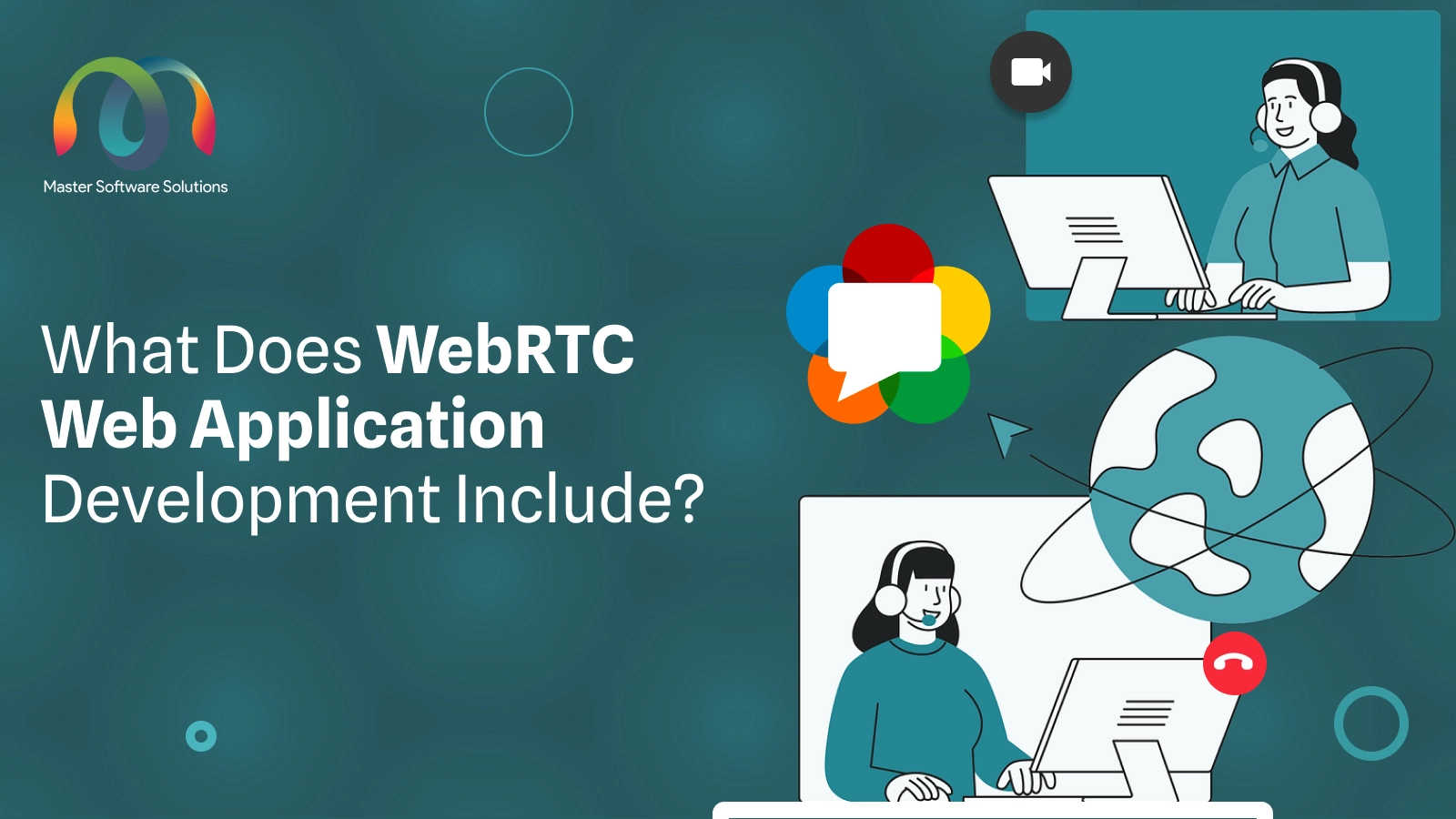What Does WebRTC Web Application Development Include?

Innovation in web development has never failed to amaze us. The development of WebRTC is one such groundbreaking technology that has transformed our communication and collaboration. WebRTC web application development has created an immersive real-time experience directly between two web browsers, from video conferencing to live streaming. It has removed the need for third-party plugins or installations.
The blog covers the aspects included in WebRTC web application development, including signalling protocols, media capture, peer-to-peer communication, and more. If you are a tech enthusiast or looking to create a WebRTC web application, it is crucial to understand WebRTC and the tools necessary to develop such a web application.
What are WebRTC web applications?
WebRTC web applications are web-based applications that use WebRTC technology to allow real-time communication between users within web browsers. The web apps allow users to communicate on audio video calls, share screens, share files, and chat without requiring them to install additional plugins or software.
How do WebRTC web applications work?
WebRTC web applications use a set of APIs (Application Programming Interfaces) offered by web browsers to establish peer-to-peer connections between the users’ devices. The established connections allow users to transfer data and stream communication, allowing them to interact seamlessly in real time.
Here’s a simplified overview of how WebRTC web applications function:
1. Signalling – WebRTC applications exchange information about network addresses, session control messages, and media capabilities before establishing a direct connection. The process is called signalling. The exchange of signalling messages, such as offers, responses, and ICE (Interactive Connective Establishment), is facilitated by a separate server side.
2. Peer connection establishment – The direct connection uses WebRTC APIs after signalling. One caller initiates the connection by sending the caller an offer with information about its media capabilities and network addresses.
3. ICE (Interactive Connectivity Establishment) – WebRTC uses ICE to establish connections that can transverse firewalls and NAT (Network Address Translation) devices. ICE uses STUN (Session Transversal Utilities for NAT) and TURN (Transversal Using Relays Around NAT) to gather network-related information and determine the optimal communication path between peers.
4. Media stream management – WebRTC enables the exchange of audio, video, and data streams between peers. This process involves media capture from devices like webcams or microphones, encoding media into a suitable format, and transmitting over the established connection. It also synchronises media, manages bandwidth, and handles errors, ensuring a smooth communication experience.
5. Real-time communication – Peer connection and media stream exchange using WebRTC enable real-time communication between users. Users can initiate audio-video calls, share screens, share files, and chat directly without additional plugins or software installation.
6. Connection termination – WebRTC securely terminates the peer connection, releasing allocated resources and closing network connections.
Read More: WebRTC – Real-time Communications and its Benefits
Why should you opt for WebRTC web application development?
WebRTC web applications have a platform-agnostic nature. They can run on a wide range of devices and operating systems, including desktop computers, laptops, smartphones, and tablets, as long as the browser supports WebRTC technology.
1. Cross-platform compatibility – These web applications can run on various devices and operating systems, which include desktop computers, laptops, smartphones, and tablets. Platform compatibility ensures a consistent user experience regardless of the device used.
2. Low latency – WebRTC ensures low-latency communication, making it suitable for applications that require real-time real-time interaction, such as video conferencing, online gaming, and live streamlining. Low latency improves the overall user experience and allows smooth and uninterrupted communication.

3. Peer-to-peer communication – WebRTC enables direct communication between users’ devices without intermediary servers. Peer-to-peer communication reduces the dependency on centralised systems, enhancing privacy and security.
4. Flexibility and customisation – You can tailor real-time communication features of WebRTC APIs to suit specific use cases and requirements. You can integrate additional features, customise the user interface or implement media processing to innovate and create unique experiences.
How can we help you?
Master Software Solutions is one of the best tech-service-providing companies, with more than 11 years of experience and a team of more than 90 tech experts. We have successfully delivered WebRTC application development services for 9+ years. We offer various services related to designing, developing, and implementing real-time communication solutions using WebRTC technology. We create tailored WebRTC application development solutions. If you are also looking forward to WebRTC application development, schedule a call with our experts to discuss your business requirements and see how we can help you.
